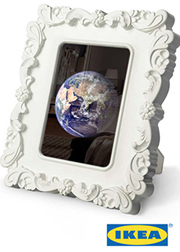3 myth-busting sustainability strategies
The article 3 myth-busting sustainability strategies written by Chad Park, Executive Director of The Natural Step Canada, and Brendan Seale, Sustainability Manager for IKEA Canada, was originally published on INMA.
***
 The term “sustainability” has been vaguely defined and is inappropriately overused. But actually practicing sustainability as an ongoing journey in a way that doesn’t erode social and ecological systems — while doing more good for society as a whole — is something all organisations should strive for.
The term “sustainability” has been vaguely defined and is inappropriately overused. But actually practicing sustainability as an ongoing journey in a way that doesn’t erode social and ecological systems — while doing more good for society as a whole — is something all organisations should strive for.
From retailers to telecoms, insurance companies to oil and gas firms, most major businesses now have a sustainability strategy and function in their organisations.
The same is true in other sectors as well. Most universities are adopting sustainability policies and implementing sustainability programmes on their campuses. Most municipalities (in Canada at least) have community sustainability plans.
The approaches to sustainability range from window dressing to deeply embedded drivers of innovation. Whatever the approach, it’s clear that something important is happening.
Yet, despite having its fair share of heroes, villains, and brand-name players, this dynamic movement gets very little media attention. Why?
One reason might be because the word sustainability is overused and misunderstood. It is often equated with vague terms like “going green” or the “triple bottom line” of social, environmental, and economic considerations.
It is sometimes even used in seemingly contradictory expressions such as “sustainable growth,” or in entirely different contexts (e.g. the sustainability of our health-care system).
It’s no wonder that sustainability hasn’t caught on in mainstream public dialogue.
Globally, most practitioners can agree on a high-level definition for sustainable development by referencing the United Nations Brundtland Commission: Meeting the needs of today without compromising the ability of future generations to meet their needs.
But definitions sometimes can get lost in translation when applied to the real, tangible work of acting for sustainability within organisations and communities.
To challenge some of the common misconceptions in building a compelling narrative, we offer three myth-busting strategies:
1. Sustainability is a journey with no clear destination. Actually, sustainability is a definable future state that we must achieve
We don’t have to know the details of the future state, but we can define it on a principle level. Fortunately, much of the heavy lifting has been done for us.
Natural and social science can tell us the system conditions for sustainability, either thresholds beyond which irreversible ecological damage may occur or minimum levels of well-being below which society faces instability or breakdown.
We can use these principles for a rigorous and clear articulation of a sustainable future. Thousands of organisations have done so to shore their own businesses and communities’ current and future resilience.
2. Sustainability is about balancing social, environmental, and economic priorities. In fact, it’s not about finding a hypothetical sweet spot. It’s about transitioning to a future state as smartly and smoothly as possible where our economy is no longer eroding social and ecological systems.
We need financial sustainability today and all the way through the process of getting to that point.
The language of “balance” often dominates how sustainability issues are discussed, but this can blur the real intention. Even a 50% increase in material efficiency, while laudable, is not nearly enough if a company’s goal is exponential growth of a resource-hungry business.
We need to be measuring sustainability progress in absolute terms, not just in relative terms.
3. Sustainability is about reducing our negative impacts – doing less bad. Not so. Sustainability is about finding new ways to meet human needs – doing much more good.
It’s a grand entrepreneurial challenge. In some cases, it will demand a significant reconsideration of how value is created in society, and how human needs are satisfied without negative consequence.
For a home furnishings retailer as an example, this might mean developing a keener understanding of how people can and would benefit from living a more sustainable life at home, and inspiring and enabling people to do just that.
Some companies have now stated publicly and unequivocally that they aim for their business to have a positive impact on people and the planet; and why wouldn’t they aim for this?
Doing so gives an organisation the license and motivation to deeply explore and understand the full scope of its impacts and set ambitious targets that engage its staff and business partners.
For example, IKEA’s “People and Planet Positive” strategy and goals enable the company to explain its performance relative to a desired future state of real sustainability.
Examples include objectives to achieve energy independence by generating more renewable energy than the company consumes worldwide, to use only renewable and/or recycled plastics in its products – both by 2020 – and to make sustainable living affordable to many people rather than a luxury for the few.
Addressing the three myths may sound like parsing words, but the implication for businesses, governments, and institutions are immense. It’s the difference between sustainability as a marginal initiative on the periphery and sustainability as a central tenet and core narrative about our organisations and institutions.
It’s about working to get our institutions and organisations “fit for the future.”
That is the essence of sustainability.
Ultimately, society will no longer accept value creation at the expense of employees, communities, or the environment, but will demand shared value with positive impacts for people and the planet.
In the process of getting to this future, there will be winners and losers; those that thrive, and those that fail to adapt. Those who integrate sustainability principles into the heart of their core business will be“future-proofed” or fit for a sustainable future.
Written by Chad Park and Brendan Seale
Source: www.inma.org
- Log in to post comments

